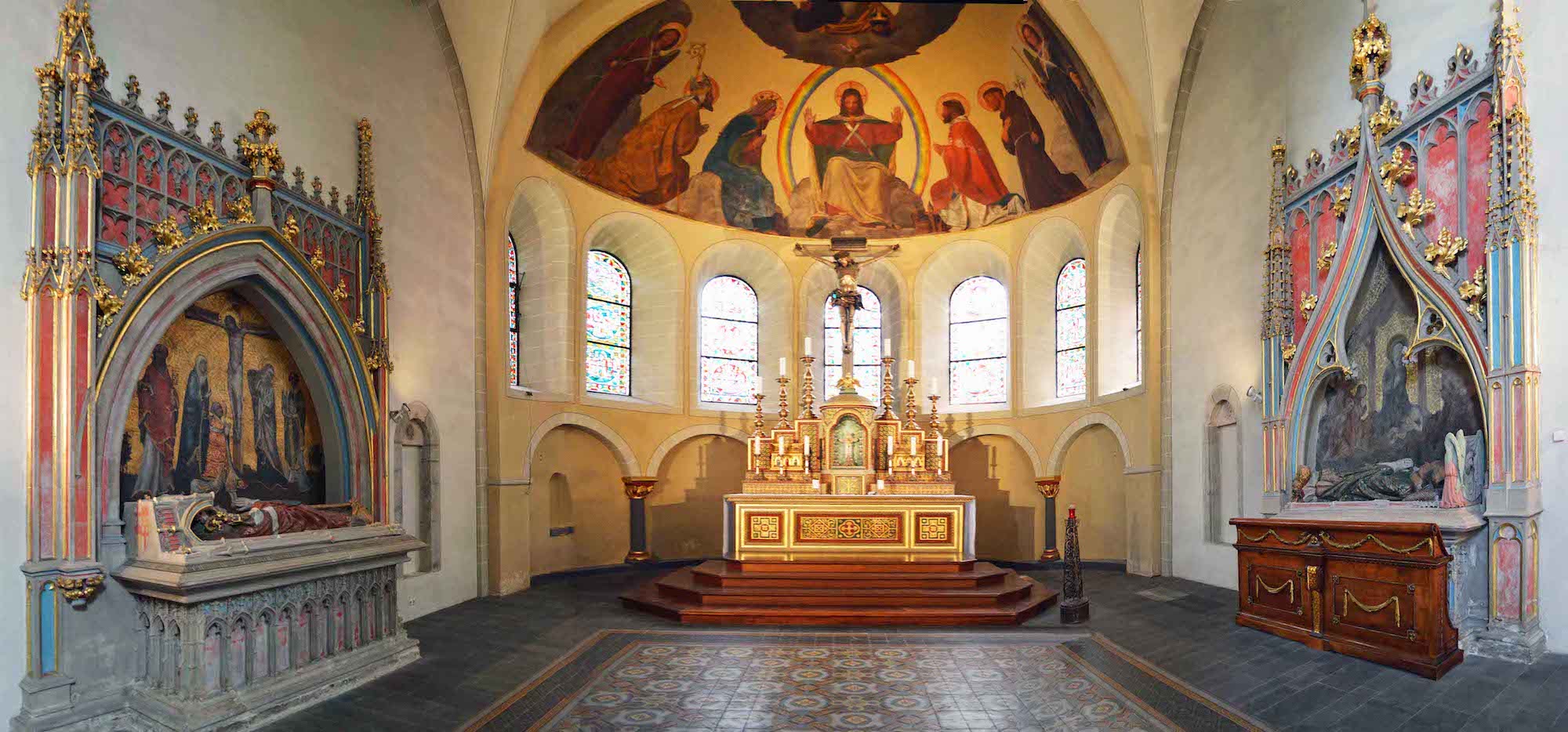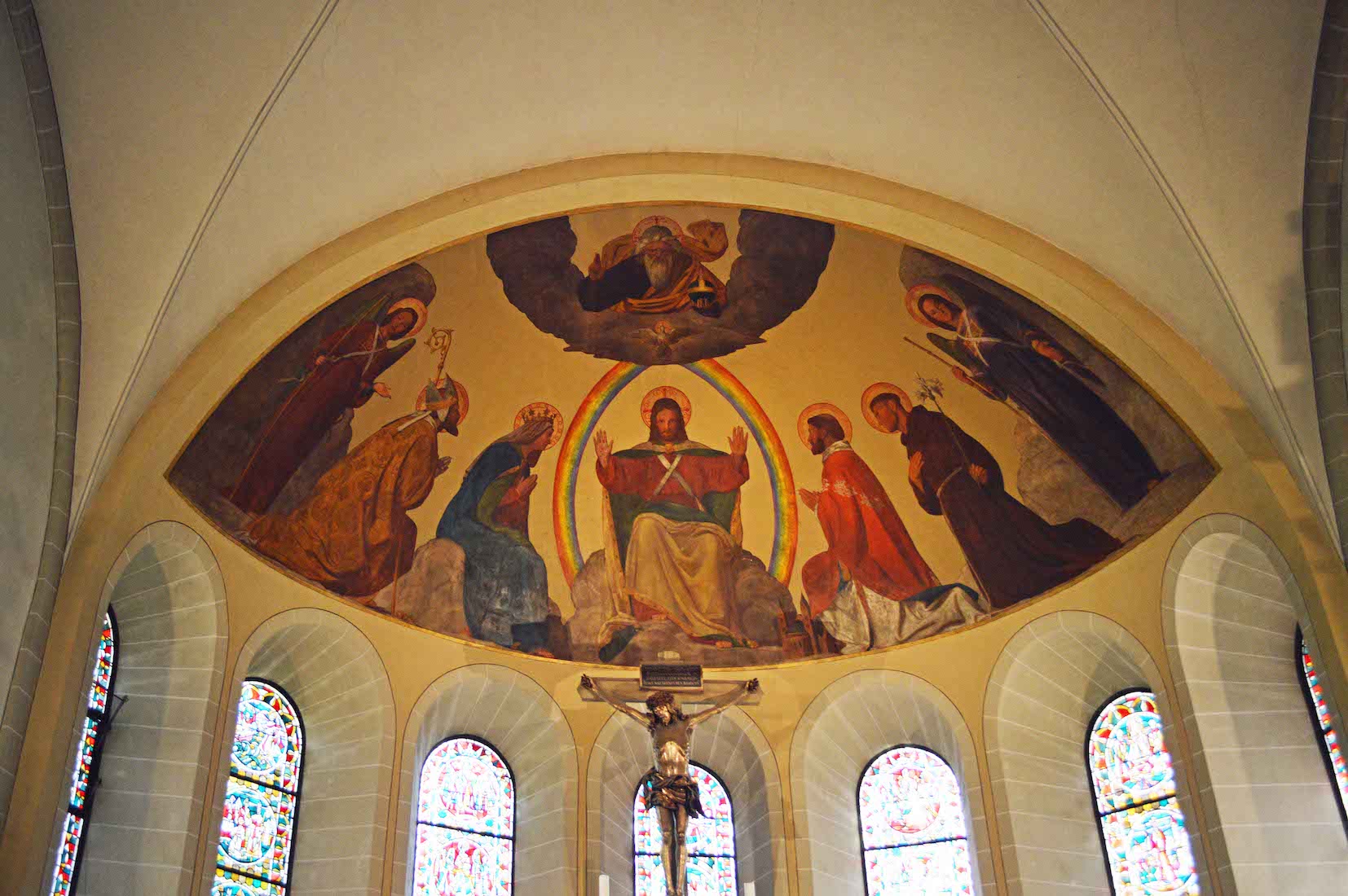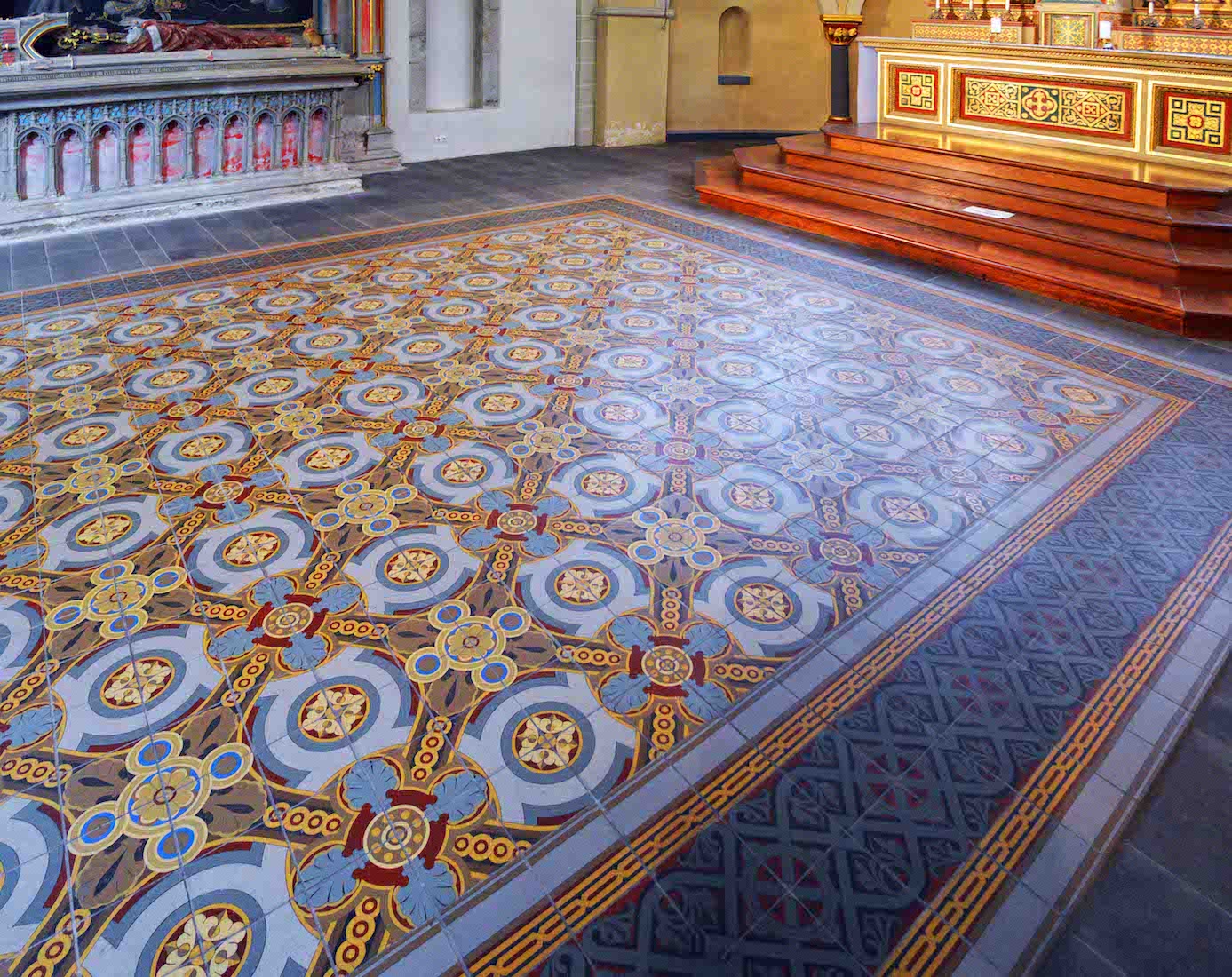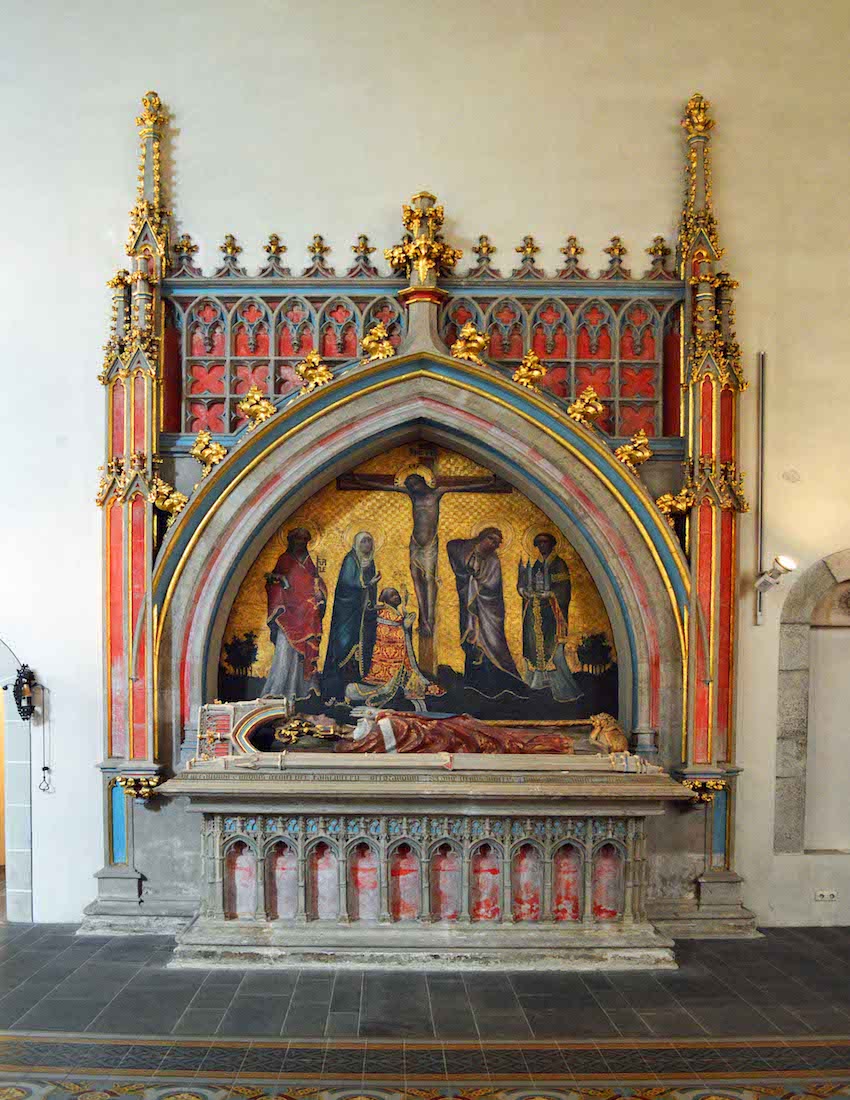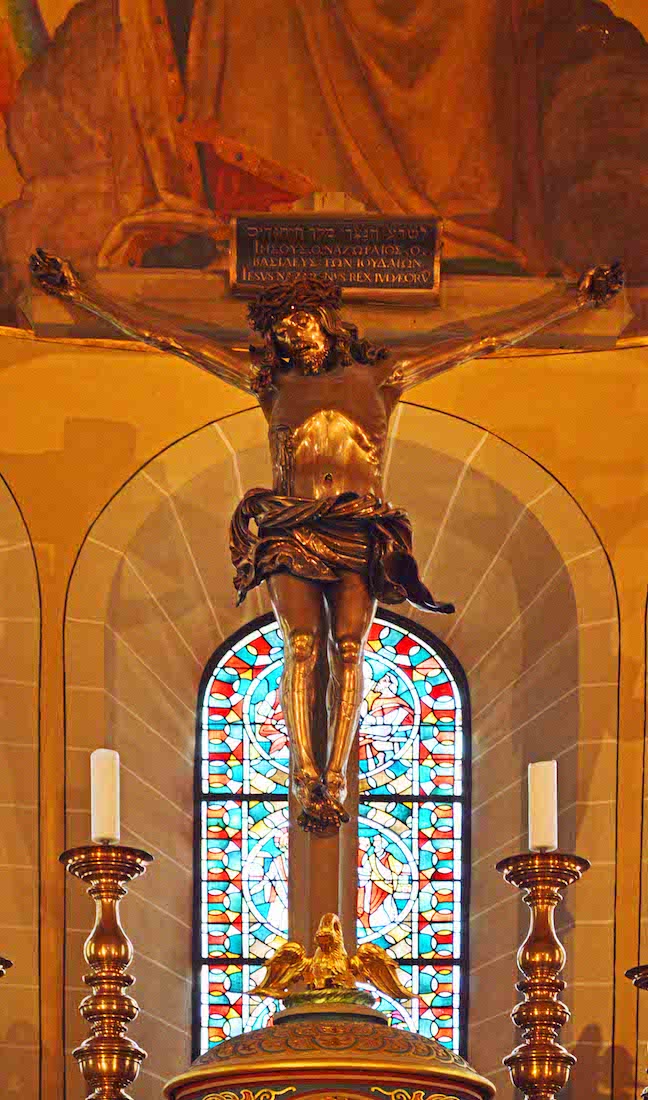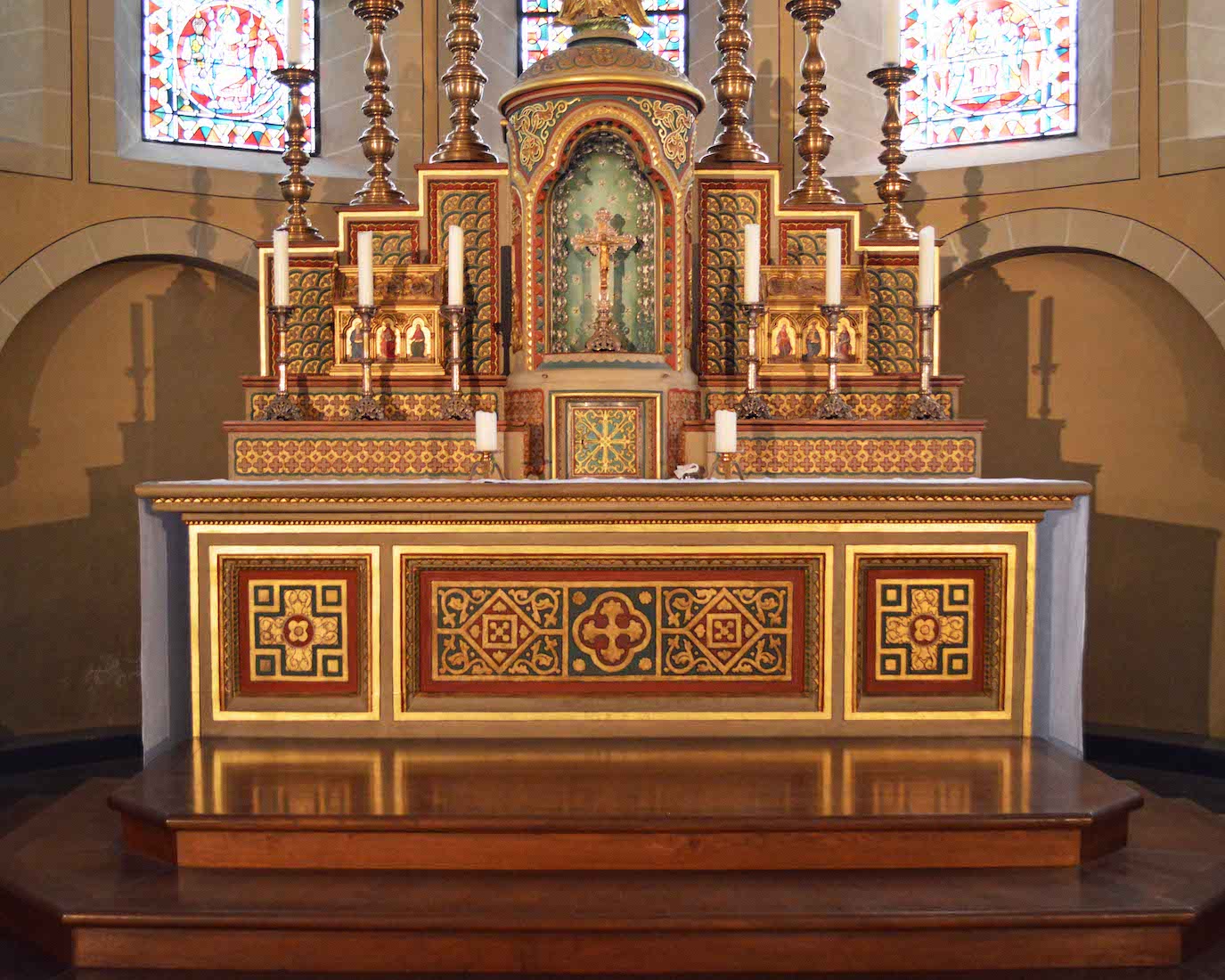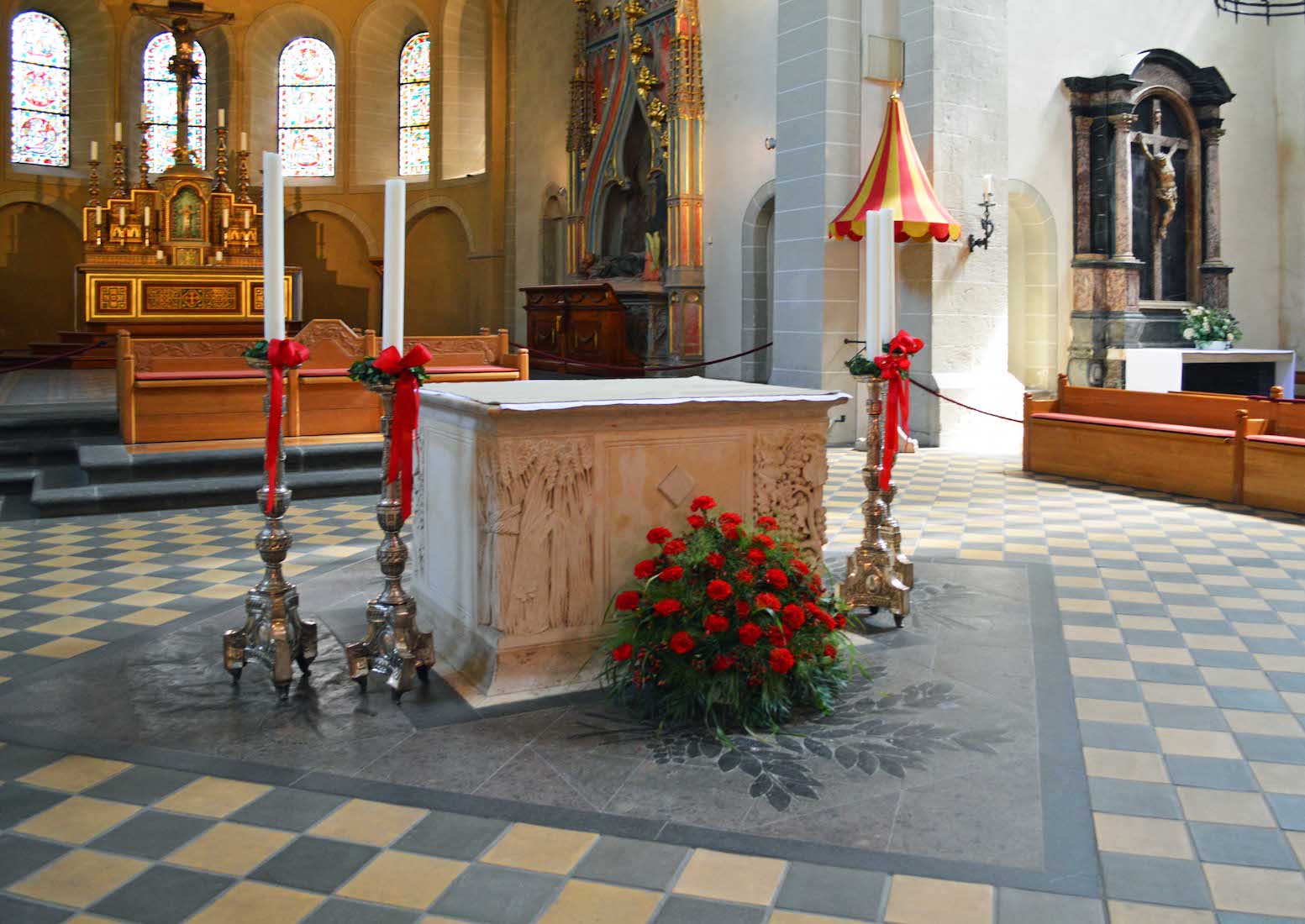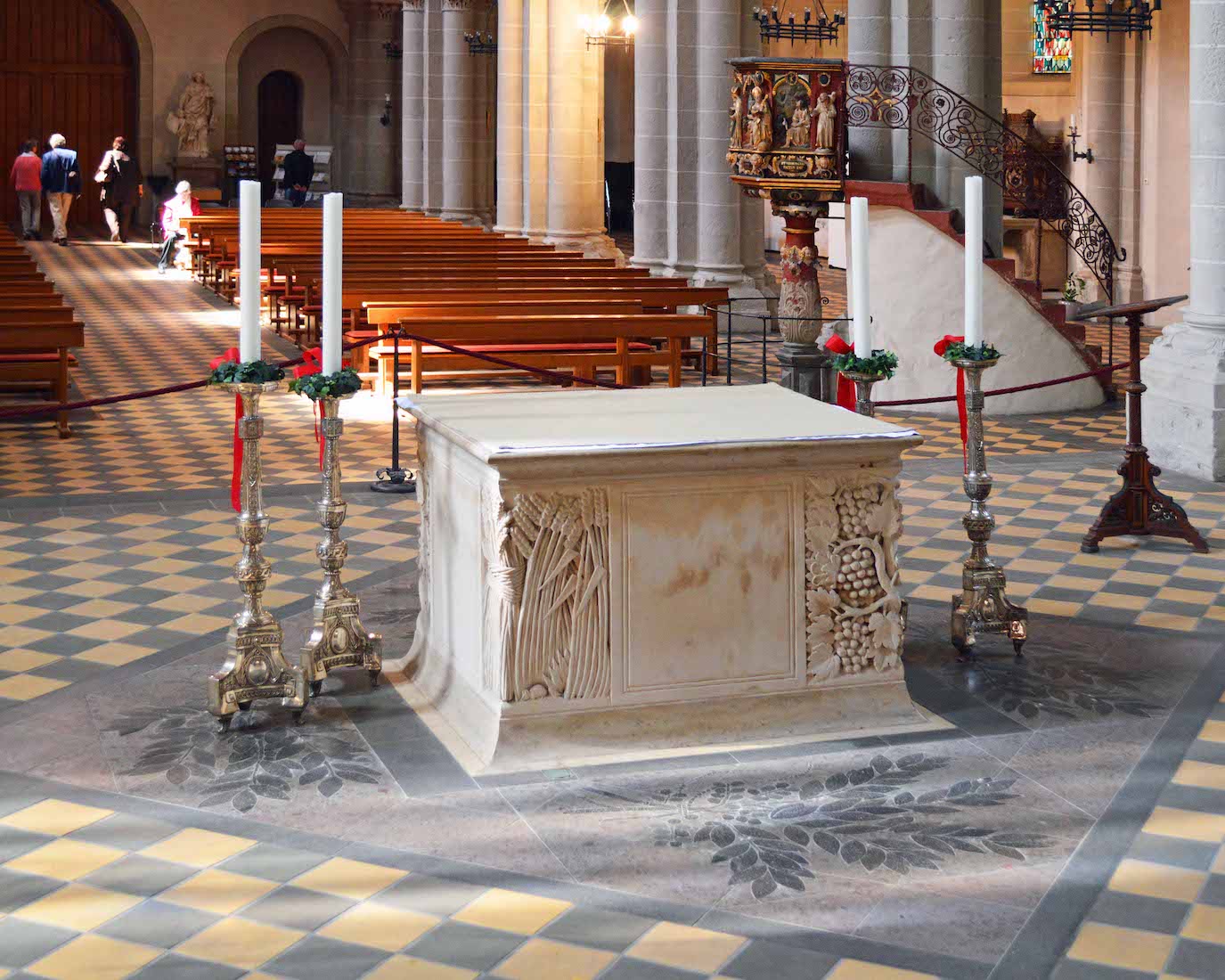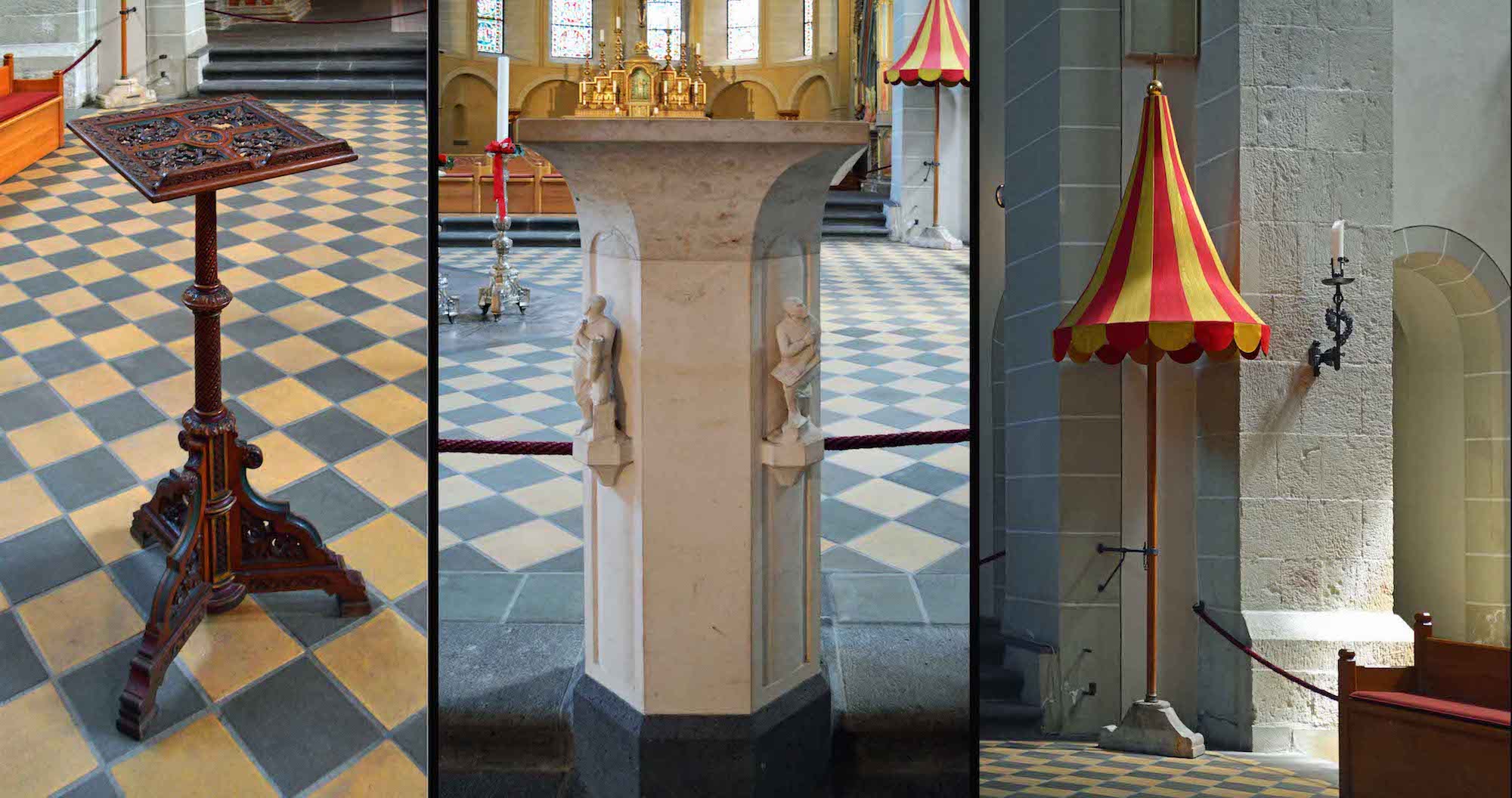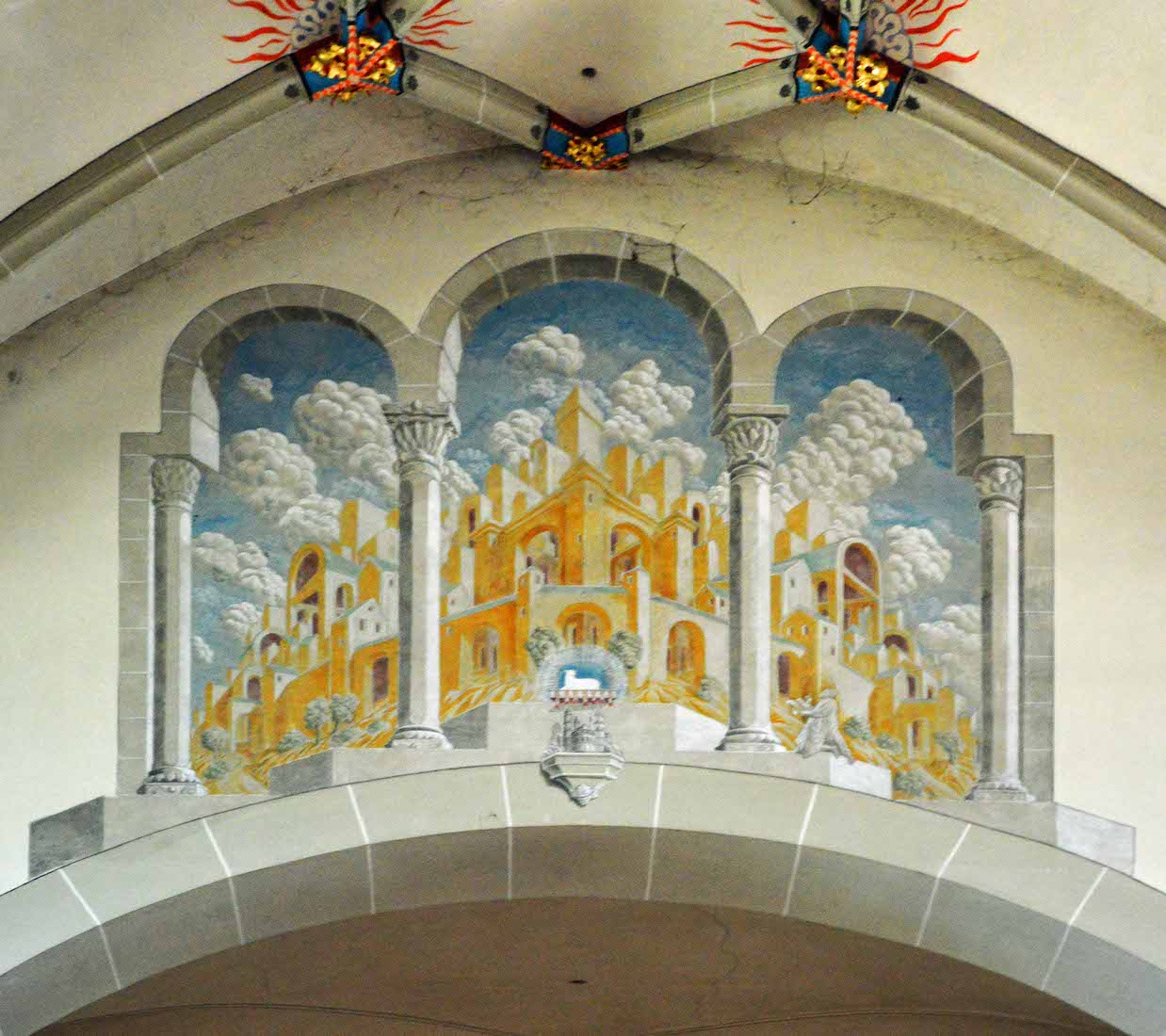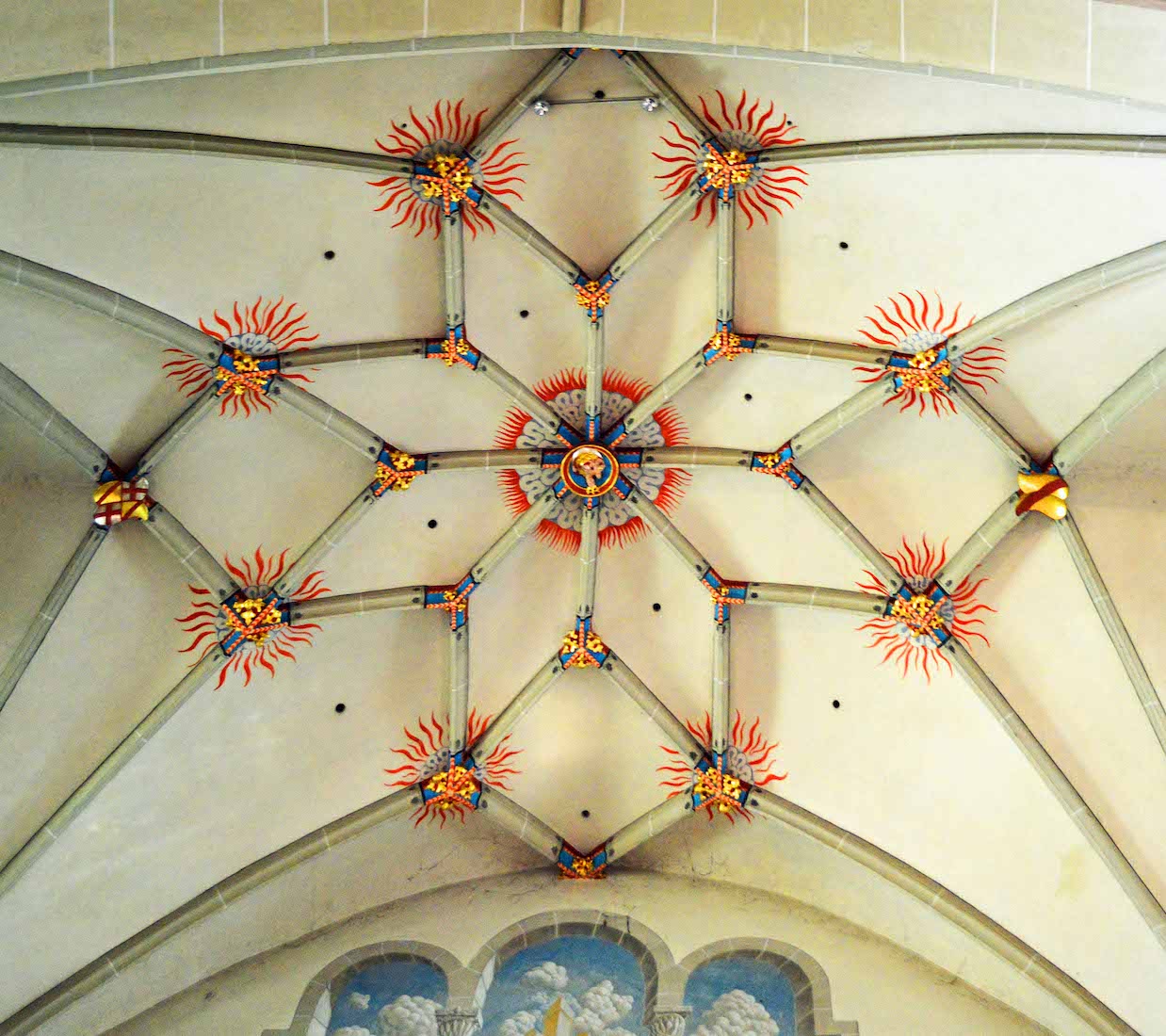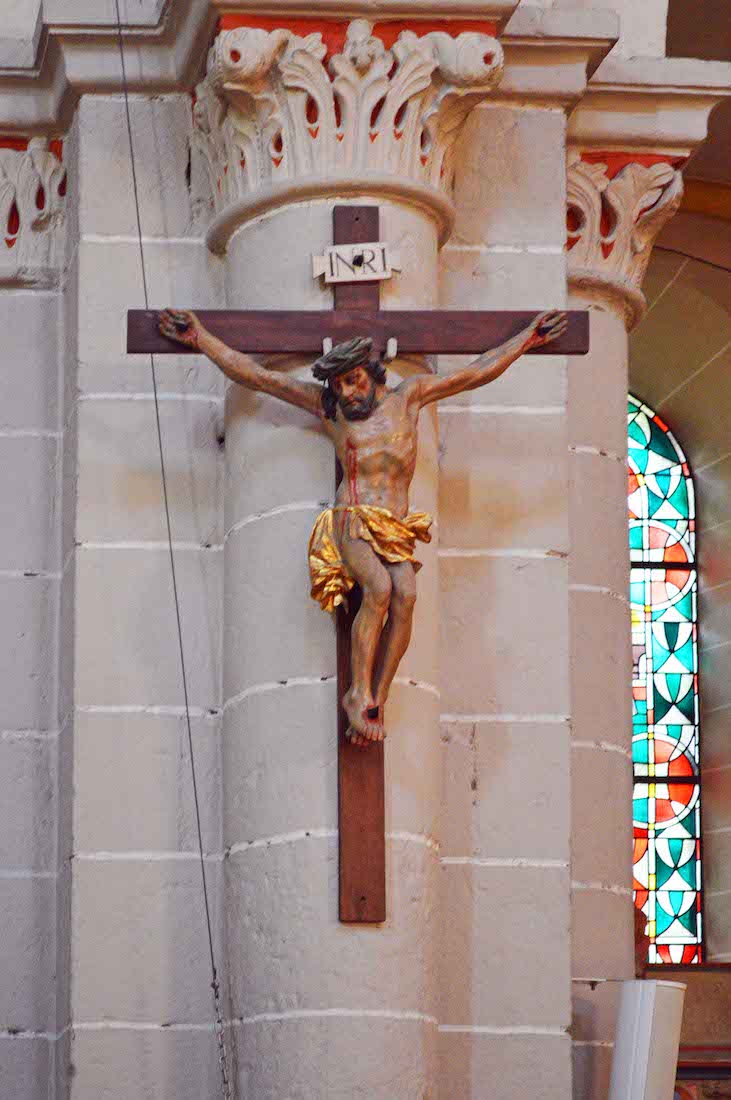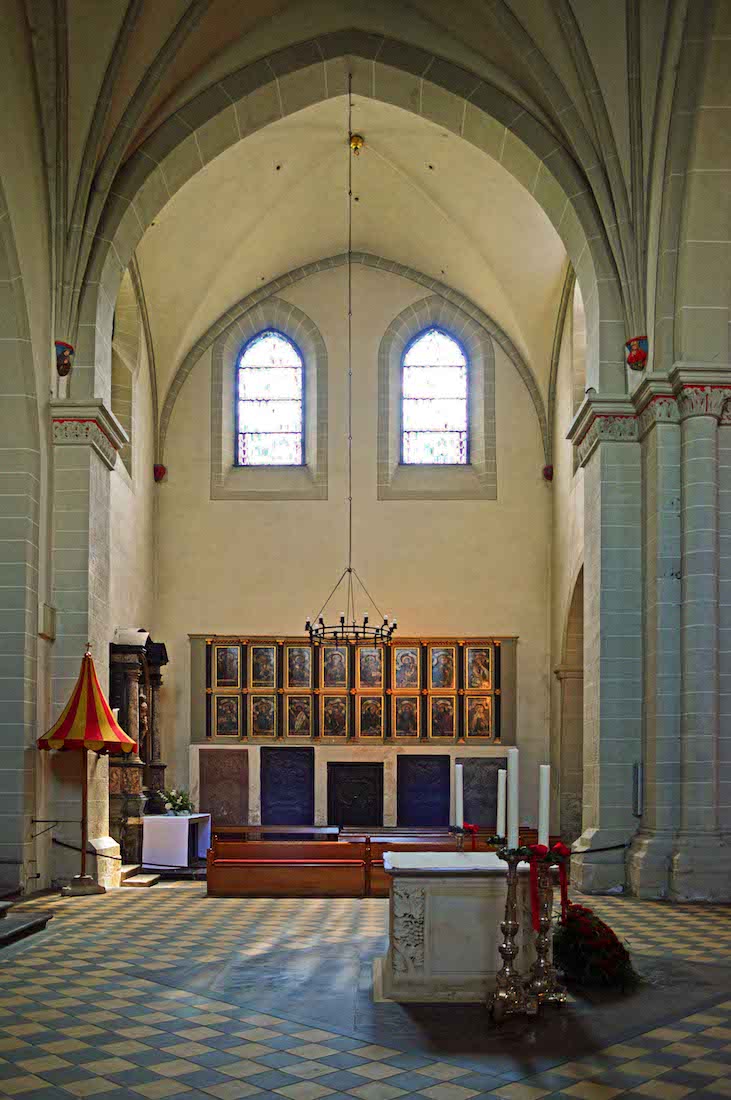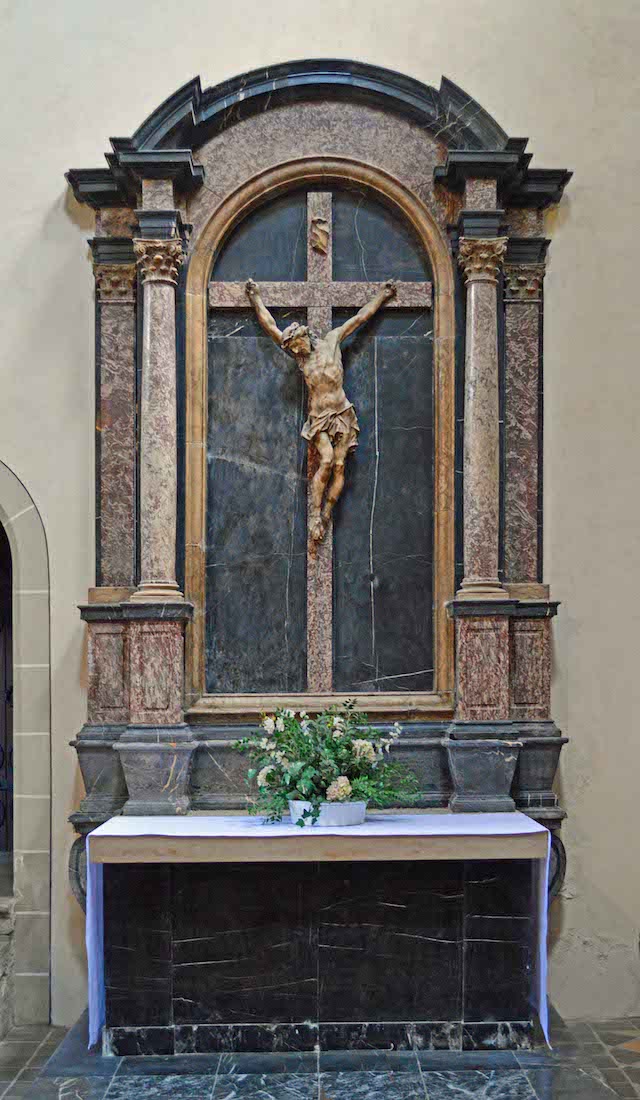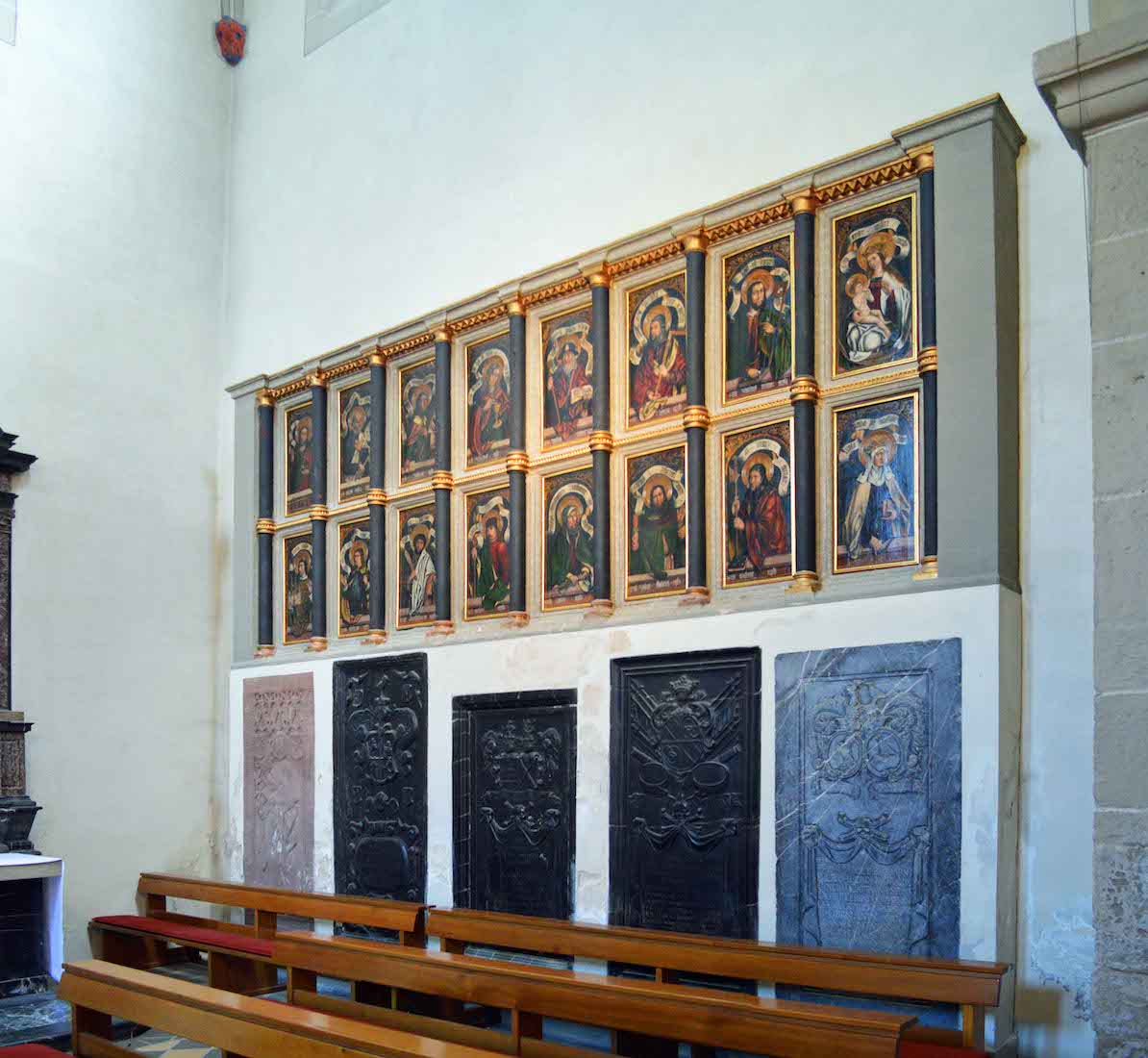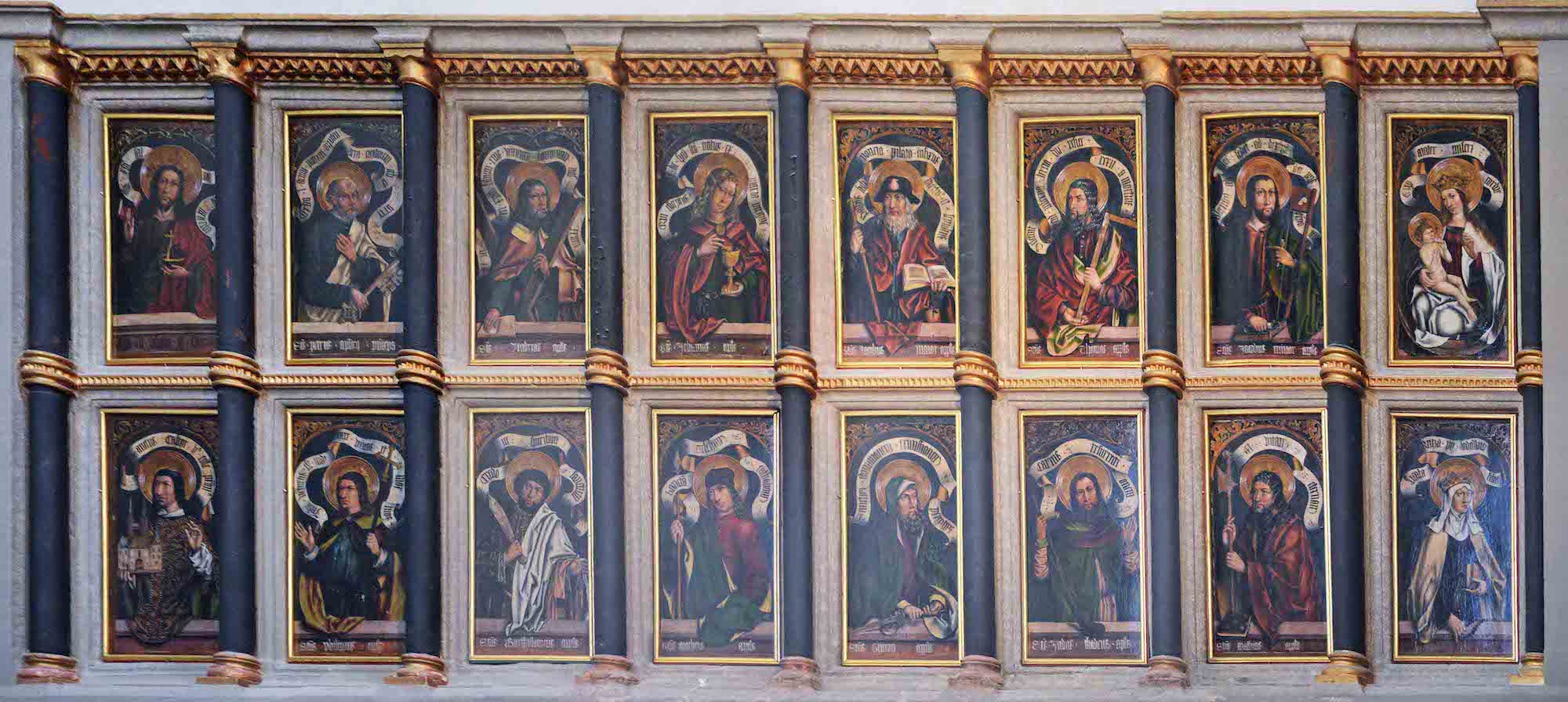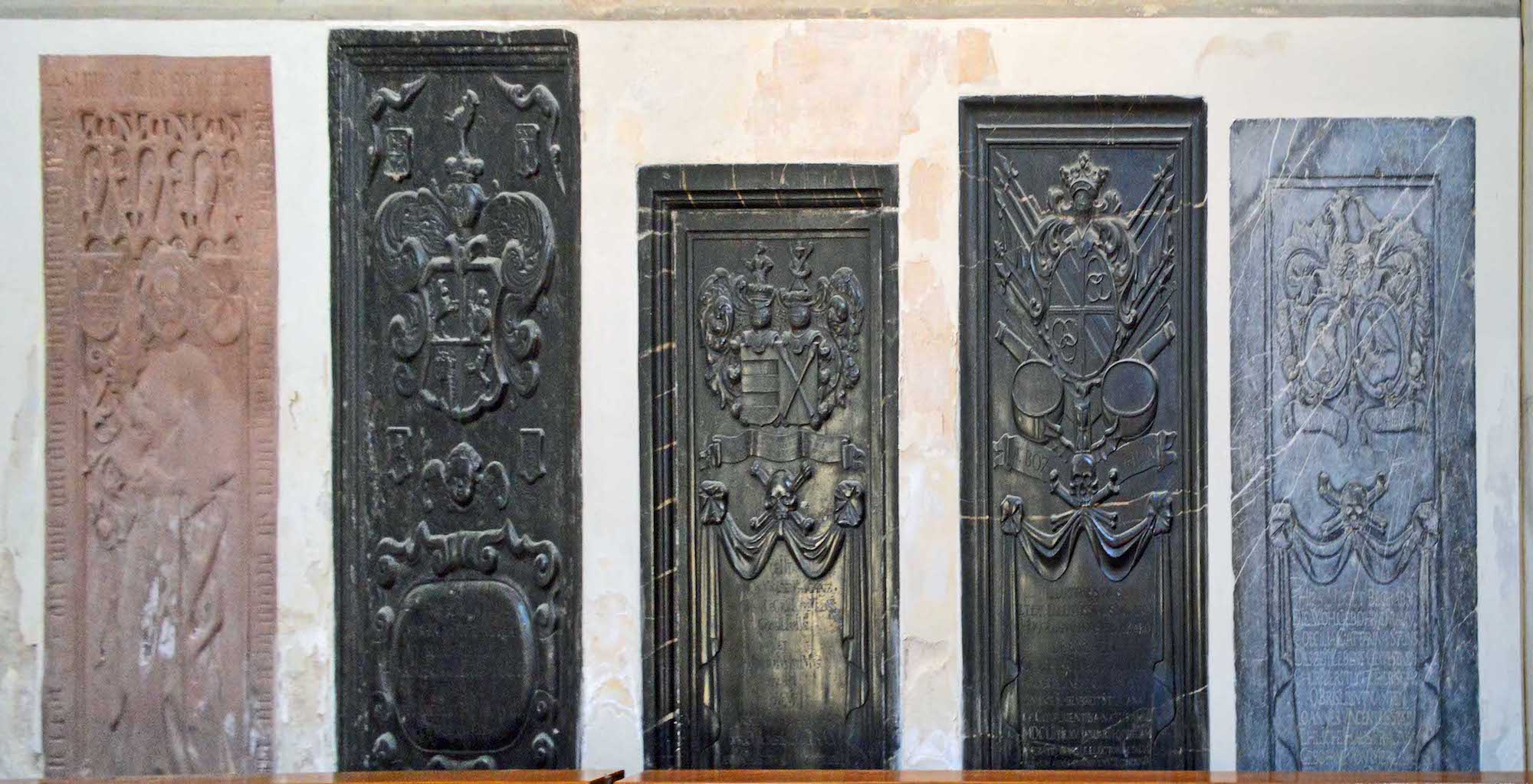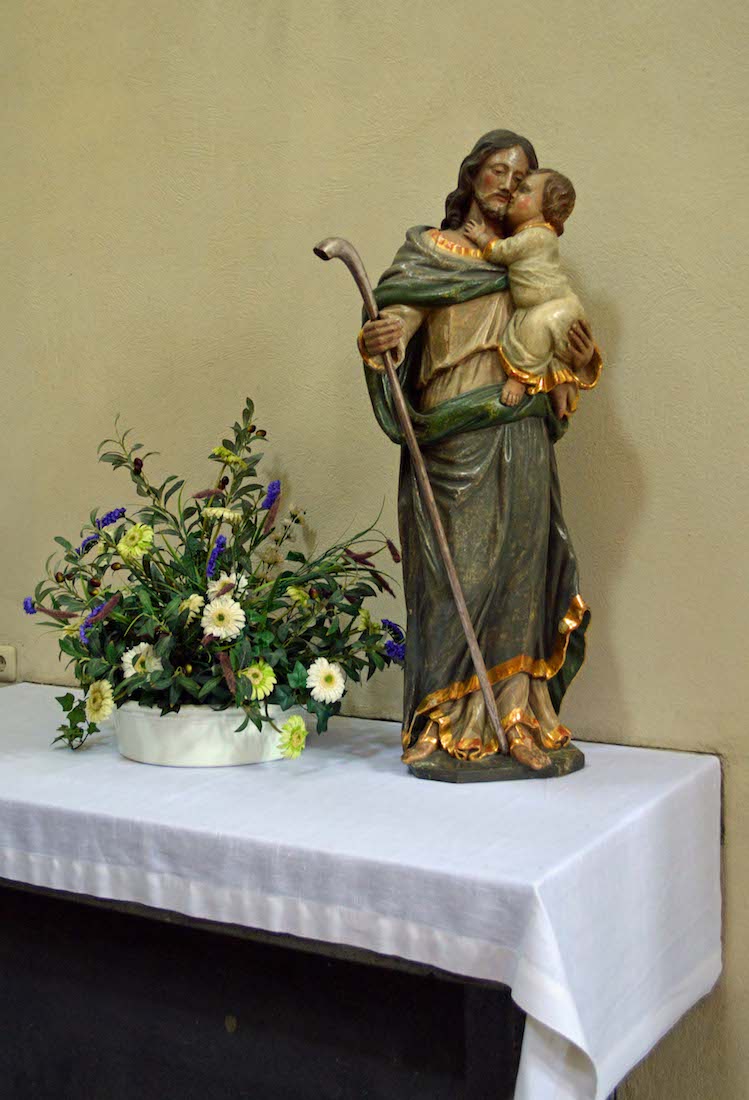
On the small altar stands a statue of Christ lovingly holding a small child, and carrying a modified shepherd’s crook. We now leave this area, and move across to the central sanctuary. PLAN
43. FRESCO
Between 1840 and 1860, the interior of the Basilica was provided with frescoes. This fresco dates from 1849, and was painted by Joseph Anton Nikolaus Settegast of Koblenz. The Risen Christ is at centre, and we can identify Mary at left and Joseph (with his sprig of lily!) at right. There are two other figures, as well as an angel at each end, and God the Father looking down from above.
44. TILING
The area in front of the high altar is laid with beautiful tiling.
45. TOMB
The tomb on the North side of the sanctuary is that of the Trier Archbishop and Prince Electorate of Trier, Kuno von Falkenstein who was buried in 1388. The painting in the niche is attributed to Wilhelm von Köln. Notice St Castor standing to the right of the Cross.
46. CRUCIFIX
Above the high altar is a large bronze crucifix, which is one of the best works of Georg Schweigger of Nürnberg (1685).
47. HIGH ALTAR
The rectangular Choir is dominated by the powerful high altar which was built in 1848 according to the plans of the master builder Lassaulx and the painter Heinrich Knauth. The altar was restored in 1990.
48. SANCTUARY LAMP AND TOMB
The traditional sanctuary lamp is supported by an elaborate wrought iron stand. The tomb on the South side is of Werner von Falkenstein (buried 1418), who succeeded Kuno von Falkenstein. In the niche are the remains of a 19th century fresco.
49. SANCTUARY WINDOWS
The sanctuary windows form a fine set. The outer two are of abstract design. The inner five depict 15 scenes. Many of these are from the life of Christ, but there are others, for example, some relating to the Basilica.
50. NAVE ALTAR
The nave altar is made of Tercé and Jura limestone. It was crafted by Theo Heiermann in Cologne in 1990. After the meeting of Vatican II, Catholic churches began using a central nave altar in place of the high altar for administering the Eucharist.
51. REAR VIEW OF THE NAVE ALTAR
The carvings at the rear of the nave altar illustrate the growing grain and the flourishing grape vine. There is an obvious allusion here to the Eucharistic elements of bread and wine.
52. LECTERN, AMBO, CANOPY
Forward from the nave altar, and on either side, stand the carved lectern and the marble ambo. Further back on the South side stands the red and yellow striped canopy or ‘conopaeum’. This is another symbol of the minor basilica status given by the Pope to St Castor’s. In this right hand view, notice the doorway to the right of the striped canopy. This leads through to the ‘Southeast Basilic’ – a private vestry area for officiating clergy.
53. NEW JERUSALEM FRESCO
At the back of the Crossing above the sanctuary arch is this fresco of the New Jerusalem. At centre front is a white lamb, and just below this, a small image of the St Castor’s Basilica.
54. CROSSING VAULT
The central keystone of the Crossing vault depicts the Madonna with Child and is from the 15th century. The vaulting was restored to its original Gothic colours in 1988.
55. CRUCIFIX
As we have previously noted (#22), there is a crucifix attached to the pillar across from the pulpit. The Cross carries the text ‘INRI’ which stands for the words of Pilate: ‘Jesus of Nazareth, King of the Jews’..
57. TRANSEPT CRUCIFIX
On the East wall of the South transept is a memorial for the Baron of Schmidburg, in high baroque style, and dating from 1719. The architectural components are made of Lahn marble, and the figure of Christ on the crucifix is of alabaster.
58. TRANSEPT SOUTH WALL
This is an angled view of the South wall of the South transept. At top are sixteen paintings taken from a former screen in the Church.
59. PAINTINGS
The central twelve paintings here depict the 12 Apostles. The remaining four end panels show Christ, Mary, and Saints Castor and Rizza. The paintings are painted on wood and date from the second half of the 15th century.
60. FIVE TOMBS
On the lower portion of the South transept wall are five tombstones in early romantic stone frames from the 12th century.


